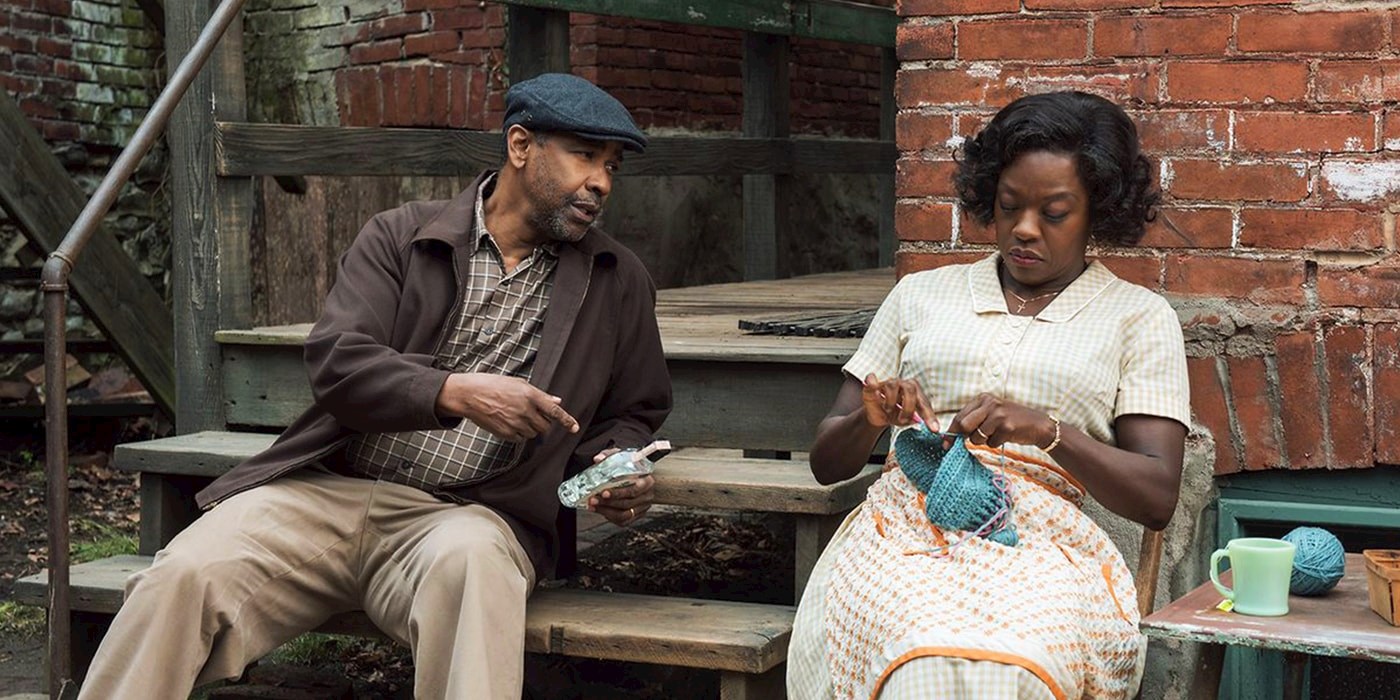When the Academy Awards are broadcast on Feb. 26, several Carnegie Mellon University alumni will be rooting especially hard for “Fences,” one of this year’s 10 Best Picture nominees. You will not see them on the red carpet, nor will their faces appear on screen, but their fingerprints are all over the big screen adaptation of August Wilson’s Tony and Pulitzer-prize winning play of the same name.
Josh Bonnett, Edgar Um Bucholtz, Darien D’Alfonso, Smith Hutchings, Lauri Mancuso, Chloe Newman and Samantha Pollack helped create the costumes and design the sets for the stunning 1950s era film.
Denzel Washington directed and starred in “Fences,” which is set in the Pittsburgh Hill District home of Troy Maxson, a former Negro League baseball player struggling to provide for his family.
Normally, we would redo the house on a sound stage. But Denzel wanted to capture the tightness of the house — it made it harder for the crew, but that’s the sense he wanted in the film.
Determined to accurately represent the Hill District in 1957, Washington chose to shoot the film in a house in the neighborhood — a decision that required aging the home from top to bottom before cameras began rolling. Helping to make that happen were CMU’s School of Art graduates Bonnett (2000), Bucholtz (1993), D’Alfonso (1984) and Mancuso (1991). They were part of a crew that spent months re-plastering the home’s interior, aging the house’s red brick, removing air conditioners and antennas from the surrounding houses in the neighborhood and replacing aluminum windows with new wooden ones, which were then made to look old, a process in Hollywood art departments known as “aging down.”
“It was unusual for ‘Fences’ to be entirely shot in that house. Normally, we would redo the house on a sound stage,” Bucholtz said. “But Denzel wanted to capture the tightness of the house — it made it harder for the crew, but that’s the sense he wanted in the film.”
Newman, who earned her degree in 2013 from CMU’s School of Art, and Pollack, who earned her degree from the School of Drama 2015, worked in the film’s costume department. They managed hundreds of suits, jackets, dresses and shoes to authentically outfit dozens of extras, from neighborhood kids playing pickup baseball in front of Troy’s house to Troy’s sanitation co-workers. Most of the period-specific costumes were decades old.
“They kept breaking — buttons, zippers, you name it,” Newman said.
And 1986 School of Art graduate Hutchings worked as a buyer in the set decoration/art department — finding all the furniture, bric-a-brac, antiques— in essence everything that is not nailed down.
All told, the CMU alumni’s months of work added up to a stunning visual palette that helped Fences ascend to the precipice of Hollywood’s most prestigious award.
What’s in a Face? Academy Honors Alumnus, Past Faculty Member for Technical Achievements
Among the 18 winners of this year’s Scientific & Technical Achievements Awards, presented by the Academy of Motion Picture Arts and Science, are Carnegie Mellon University alumnus Kiran Bhat and past faculty member Iain Matthews. Both are being recognized for their work in capturing facial performances.
Bhat, who earned his doctorate in 2004 from the School of Computer Science, is being recognized with Michael Koperwas, Brian Cantwell and Paige Warner for the design and development of the Industrial Light and Magic (ILM) facial performance-capture solving system.
The system, which transfers facial performances from actors to digital characters in large-scale productions, was used in “Rogue One: A Star Wars Story” to resurrect the late actor Peter Cushing’s Grand Moff Tarkin character and also in “The Avengers” to capture Mark Ruffalo’s expressions for his character, the Hulk.
Bhat has moved on to found Loom.ai, a company that is converting selfies into 3-D avatars.
Matthews is being recognized with Luca Fascione and J.P. Lewis for the design, engineering and development of the FACETS facial performance capture and solving system at Weta Digital. Matthews was a systems faculty member in the Robotics Institute until 2006, working on face modeling and vision-based tracking. He spent two years at Weta Digital and helped develop the facial motion capture system for “Avatar” and “Tintin.”
FACETS was one of the first reliable systems to demonstrate accurate facial tracking from an actor-mounted camera, which enables animators to bring the nuance of the original live performances to a new level of fidelity for animated characters.
In 2008, Matthews joined Disney Research in Pittsburgh as a senior research scientist and leads the computer vision group. He now works for Oculus Research in Pittsburgh. He holds an adjunct faculty appointment in the Robotics Institute.
The scientific and technical achievement winners will receive their awards at a presentation on Saturday, Feb. 11, in Hollywood. Portions of the presentation will be included in the Oscars telecast that will air at 7 p.m. ET, Sunday, Feb. 26, on ABC.
With Bhat’s and Matthews’ wins, Carnegie Mellon alumni and faculty have received nine Academy Awards to date.




